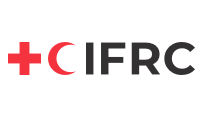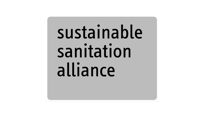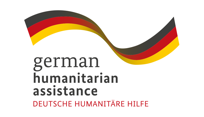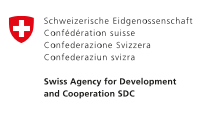The design of humanitarian SWM must be adapted to the local context, the type of crisis and the current phase of an emergency. Common categories used to distinguish phases are (1) acute response, (2) stabilisation and (3) recovery. Depending on the type of humanitarian crisis, these phases might develop linearly with substantial overlaps, for example, after a natural disaster, or phases may display an erratic back-and-forth, especially between the first two phases, commonly found in armed conflicts.
Additional longer-term phases to consider are (4) protracted crisis and (5) development. Protracted crisis refers to situations where significant populations are acutely at risk over a prolonged period, such as during armed conflicts. The term might also be used for protracted displacement situations, which UNHCR defines as ’at least 25’000 refugees from the same country (...) living in exile for more than five consecutive years’. The development phase describes the shift from humanitarian aid towards development, which is longer-term, responds to systemic problems and is focused on economic, social and political developments.
The identification of these broad phases is helpful when planning assistance, whilst recognising that the division is theoretical and offers a simplified model of a highly complex situation.
Acute Response
This usually covers the period from the first hours and days of a crisis up to the first few weeks or months, when rapid, short-term and life-saving measures are implemented until more permanent or durable solutions can be found. Rapid humanitarian relief interventions immediately follow natural disasters, conflicts, epidemics/pandemics or further degradation of a protracted crisis. The purpose of these humanitarian interventions in the acute response phase is to secure and ensure the survival of the affected population and alleviate suffering. These humanitarian interventions are guided by the principles of humanity, neutrality, impartiality and independence. It usually takes time for external support agencies to mobilise; those affected typically deal with the emergency initially themselves.
Immediately after a crisis, hygiene and waste disposal are usually poor, so disease vectors like rodents and vermin can spread and breed rapidly. SWM is a crucial element during the acute response to prevent the spread of diseases and protect public health. SWM interventions usually start with a risk analysis identifying and prioritising the main public health concerns related to solid waste and the outlining of potential countermeasures. The risk analysis is usually based on a rapid assessment of the current status of SWM, which may include the type and volume of waste generated, existing SWM practices, the identification of potential (temporary) storage, containment and disposal sites, and the available means for waste collection and transportation [P.3]. This risk analysis will determine the immediate needs for SWM infrastructure, equipment and personnel. Based on the initial assessment, and depending on the local context, acute response SWM interventions may include establishing clearly marked collection points (with waste segregation options where possible) [P.2] and setting up a system for the regular removal and transport of waste to disposal sites (or, in the unlikely case of source-segregated waste, to treatment and recycling sites) [T]. Ideally, waste can be deposited in existing properly functioning facilities. In the absence of suitable disposal facilities, temporary and, if possible, final disposal sites need to be rapidly identified and prepared to protect public health and the environment. Coordination with local authorities, humanitarian actors (intersectoral and cross-sector) and other relevant stakeholders is important to ensure a coordinated response to waste management.
Depending on the type of crisis and context, initial SWM interventions might require preparatory actions which likely do not involve traditional SWM actors. This can include the movement of debris for the provision of access [W.3], the clearing of sites of non-explosive ordnance or the recovery of human remains. It is also possible that an initially limited SWM focus will lack the capacity to address the management of specific waste types with elevated risk potential, such as Medical Waste [W.1] or Hazardous Waste [W.2].
Stabilisation
The stabilisation (or transition) phase usually starts after the first few weeks/months of an emergency and can last six months or longer. The focus now is increasing the service coverage, the incremental upgrade and improvement of temporary structures and ensuring the active participation and engagement of the affected population. After natural disasters or in crisis settings with an elevated risk of natural disasters, relevant pre-emptive resilience and Disaster Risk Reduction (DRR) measures should be implemented during the stabilisation phase. The active involvement and inclusion of affected communities in the design and execution of humanitarian interventions should start as early as possible [X.2]. Depending on the type of disaster and crisis, this inclusion could be initiated during the stabilisation phase, ensuring equitable consideration of the needs of women, children and marginalised and vulnerable groups in the planning, decision-making and local management of SWM solutions. In addition, awareness-raising about proper waste management practices or encouraging participation in clean-up efforts may be required as well as the provision of targeted information on waste separation, disposal and potential health risks [X.6].
Participation helps to ensure that the entire affected population has safe and adequate access to SWM services and practices corresponding behaviours. Additional in-depth assessments [P.3] of the factors underpinning behaviours may be needed to respond adequately within a given local context and increase the longer-term acceptance of the planned interventions. The effectiveness of the initial interventions and the environmental impact of SWM activities (to prevent pollution and ensure compliance with regulatory standards) need to be monitored and should also lead to adaptations and improvements in the response where required [X.3]. SWM interventions may include the establishment of additional community-supported structures and, where possible, the increasing involvement of development actors. The scope for using Market-Based Programming (MBP) should also be examined [X.5].
Recovery
The recovery phase, sometimes referred to as the rehabilitation phase, aims to recreate or improve the pre-emergency situation of the affected population by increasingly incorporating development approaches and principles. This phase usually starts after, or sometimes during, acute relief or stabilisation interventions (usually >6 months) and can be viewed as a continuation of completed relief efforts. Overall, it can prepare the ground for longer-term development interventions and for handing over to medium and long-term partners. In general, recovery should consider the implementation of durable solutions and the concept of build-back-better. Depending on local needs, the general timeframe for recovery and rehabilitation interventions is usually between six months and three years. Difficult and complex situations, such as conflict-affected areas, may need much longer and can move in and out of crisis.
Recovery and rehabilitation programmes are characterised by the active participation of local partners and authorities in planning and decision making, strengthening local capacity and promoting the sustainability of interventions [X.2]. The scope for using MBP approaches should be further assessed here [X.5]. SWM recovery interventions vary; they continue to depend on local conditions as well as the affected population’s immediate and structural needs. Beyond the technical implementation of relevant SWM infrastructure, these interventions include significant efforts to strengthen SWM service structures and systems. Routines should be rapidly developed and implemented for waste storage, collection and disposal. Whenever possible, existing national or local SWM actors should be strengthened to increase the quality of their services and potentially expand them beyond their current mandate. In displacement settings, strengthened local utilities may cover both host and displaced communities. This can ensure an equitable provision of services and prevent tensions between different communities [X.9].
Recovery interventions also include longer-term capacity strengthening and training, including working with relevant local authorities and development partners. Stronger collaboration with utilities, civil society and the private sector, and the handing over of responsibilities is important; it requires the increasing participation of stakeholders in planning and decision-making early on [X.2]. Where possible, recovery interventions should provide a foundation for the further development of SWM facilities and services and include relevant resilience and DRR measures. Such plans should also integrate a long-term development vision that enhances recycling and recovery options, technical skills and capacity, financial self-sufficiency and other elements of a sustainable SWM system. Effective recovery plans have clear transition or exit strategies, including hand-over to local governments, communities or service providers to ensure that the intervention’s service levels can be maintained.
Protracted Crisis
Refers to populations affected by recurrent disasters and/or conflicts, prolonged food crises, the deterioration of people’s health and a breakdown of livelihoods. In these environments, a significant proportion of the population can become acutely vulnerable to a prolonged increase in mortality and morbidity rates. Protracted crises often occur in already fragile environments, where the state is unwilling or unable to fulfil its basic functions and to manage, respond to, or mitigate risks. In protracted crises, including protracted refugee situations, SWM interventions may resemble actions normally conducted during the acute response or the stabilisation phase. The short or medium-term perspective of these actions might be affected by fluctuating security and stability, the need to adapt to changing boundary conditions such as increased population figures, the elevated need for humanitarian assistance, the limited self-reliance of affected communities or the constraint to only implement measures of a temporary nature.
Development
The development phase is characterised by a stronger focus on universal access and the longer-term sustainability of services. Interventions in the development phase may include the fostering of relevant legislative frameworks [X.1], institutional strengthening and enhancing technical capacities for local authorities and utilities, recognising that these national and local actors must take the lead in SWM and execute it in a safe, effective and financially sustainable manner. In the development phase, affordable and equitable access to SWM services must be ensured for the entire community, including measures for the inclusion of vulnerable, marginalised and low-income households [X.2]. SWM interventions in development may also aim to shift away from simple waste disposal towards an increased recovery of usable and valuable materials and more circular economy approaches. This can include the improvement of reducing, reusing and recycling waste, livelihood opportunities, operation and maintenance of services, longer-term behaviour change and habit formation [X.6], ownership and empowerment [X.2]. In disaster and crisis-prone regions, preventative measures such as DRR, preparedness and climate change adaptation activities should be considered and addressed during the development stage.






